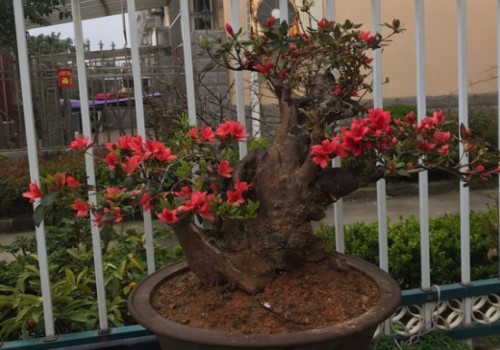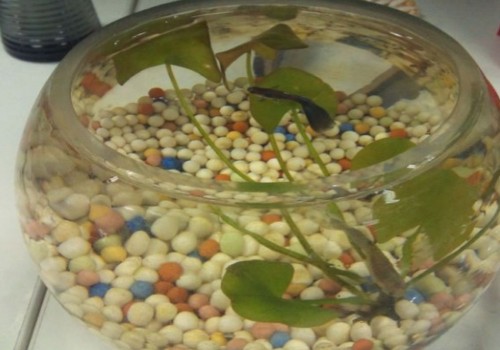What is the reason why azaleas do not bloom or bloom less?
Potted rhododendrons are not easy to feed for many pot friends, and it is not easy to raise them well. If we want to make them bloom more and more beautiful flowers on schedule, we may pay more efforts than other potted flower plants. There is no doubt that azaleas are more ornamental when they bloom, but sometimes we may encounter azaleas that do not bloom or have few flowers, or are not of high quality. So, what is the reason why azaleas do not bloom or bloom less? What are we gonna do about it?

In order to find out the reason, we have to check one by one from the growth habits of rhododendron and the growth environment and maintenance methods provided, so as to find the crux. Then according to the reasons to take the correct response and disposal measures in time, so as to improve the status quo, so that rhododendron to achieve the flowering effect we need. Today, Xiaobian will discuss with you the reasons why potted rhododendrons do not bloom or bloom less and how to deal with them.
I. Temperature discomfort
The flower bud and leaf bud of Rhododendron amurense were developed under different temperature environment. Generally, the temperature during flower bud differentiation was relatively low, while the temperature requirement for leaf bud development was relatively high. If the temperature is too high during flower bud differentiation, leaf buds may appear in large numbers, and nutrients will naturally be mainly provided to leaf buds. In the case of excessive temperature and insufficient nutrients, it is difficult to differentiate flower buds naturally.
For this reason, many pot friends like to move rhododendron to indoor maintenance in winter, but must pay attention to control the temperature, especially during flower bud differentiation, try to keep the temperature stable at about 10°C to promote flower bud differentiation. Or when entering spring, if the leaf buds germinate too much, they should be properly thinned to reduce nutrient consumption and avoid leaf buds competing for nutrients from flower buds, thus ensuring that flower buds can mature and develop.
2. Dry environment
Although azalea roots are mostly fibrous roots and are not resistant to water, it prefers a humid growth environment. Not only the pot soil humidity is required to be appropriate, but also the relative humidity of the air should be satisfied. If we only focus on maintaining the pot soil humidity and ignore the air humidity, when the air is too dry, it will also affect the normal growth of plants. Especially during the bud pregnancy period, the bud may dry up, shrivel and fall off due to insufficient air humidity, and naturally it cannot bloom smoothly in the later stage.
In order to solve the problem of environmental humidity, in addition to watering in time and in an appropriate amount, it is also necessary to spray more water on the plants and the surrounding environment to improve the air humidity. Especially during budding, it is recommended to water the plant once a day and spray 2-3 times, including spraying water into the space around the plant. If it rains, we can take the opportunity to collect some rainwater for later use, and use rainwater to irrigate azaleas, an acid-loving flower plant, which is very conducive to its growth.
Third, the fat water is too much
If the fertilizer and water are too sufficient, especially in poor light conditions, azaleas are often more prone to excessive branches and leaves without flowering. Mainly due to too much fertilizer and water caused by excessive nutrition, thus promoting a large number of new branches germination, branches in the growth period has obvious advantages, resulting in unbalanced distribution of nutrients, so it will inhibit the growth of flowering flowers and do not get sufficient nutrients to promote pregnancy buds, flowering naturally less.
In order to avoid this situation, first of all, pre-flowering topdressing should use less or no nitrogen fertilizer, usually with phosphorus and potassium-based topdressing, which can better promote flower bud differentiation. At the same time, short long branches and thin and dense branches are cut in time to improve the ventilation and light transmittance of potted plants, thus accelerating photosynthesis to form nutrients required for flowering. After entering spring, watering should be properly controlled to keep the pot soil dry properly, which is more conducive to promoting bud pregnancy and providing guarantee for later flowering.
Time: 2019-05-27 Click:
- Prev

What is the reason why Yingshanhong does not bloom?
Yingshanhong is an evergreen shrub with many and beautiful flowers. because of its high ornamental value, it is often planted as a potted plant, especially the old pile, and can be turned into a bonsai work of art for appreciation. However, the best viewing time for Yingshanhong is usually in the flowering period, that is, from April to May every spring. Of course, different regional environments
- Next

What about the worms in the water of water lilies
Water lotus leaves are oily green and blossom, which is not only suitable for viewing leaves, but also suitable for viewing flowers. If raised in pots, the ornamental value is very high. But first of all, we need to provide a high-quality growth environment, so as to ensure that the plant grows vigorously and blossoms beautifully. But if the environment is destroyed,
Related
- Fuxing push coffee new agricultural production and marketing class: lack of small-scale processing plants
- Jujube rice field leisure farm deep ploughing Yilan for five years to create a space for organic food and play
- Nongyu Farm-A trial of organic papaya for brave women with advanced technology
- Four points for attention in the prevention and control of diseases and insect pests of edible fungi
- How to add nutrient solution to Edible Fungi
- Is there any good way to control edible fungus mites?
- Open Inoculation Technology of Edible Fungi
- Is there any clever way to use fertilizer for edible fungus in winter?
- What agents are used to kill the pathogens of edible fungi in the mushroom shed?
- Rapid drying of Edible Fungi

